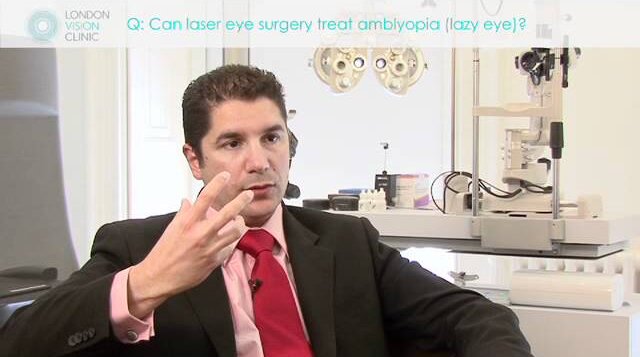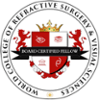What is Amblyopia (Lazy Eye) – and can Laser Eye Surgery help?

Amblyopia – more commonly known as ‘lazy eye’ – is a disorder in which vision in one eye is not fully developed. It can co-occur with refractive errors such as short-sightedness, long-sightedness, and astigmatism. If you have amblyopia and have been considering refractive treatment to correct your prescription, you may wonder: Can Laser Eye Surgery help?
Amblyopia is estimated to affect around between 1% and 5% of the general population and is the most common cause of visual impairment in children. The condition is largely treatable when diagnosed early enough (usually in childhood); however, If left untreated, the affected eye will only learn to see to a certain point and the condition becomes permanent and persist into adulthood.
What Causes Amblyopia?
Lazy eye can be caused by a wide range of things, however, it is generally due to lack of use in one eye in childhood. The most common cause of amblyopia is having a squint (strabismus) – a condition where each eye looks in slightly different directions. This is known as strabismic amblyopia.
Amblyopia can also be caused by anisometropia, a condition defined as inconsistent refractive errors. Refractive errors such as myopia (short-sightedness), hyperopia (long-sightedness), and astigmatism should be corrected to bring balance to both eyes. However, anisometropia refers to cases where the refractive error is different in both eyes (by 1 or more dioptres).
This can be treated with glasses in childhood, however, if left untreated, it can lead to one eye not being used. Lazy eye caused by an imbalance in refractive error is known as refractive amblyopia.
Ambylopia can effectively be caused by any condition in childhood which results in one eye being used less. This can also include conditions such as cataracts and ptosis (droopy eyelid). The condition usually only affects one eye, though it is possible to have amblyopia in both eyes. Some children may experience symptoms such as headaches or difficulty reading.
Amblyopia and Laser Eye Surgery
We are often asked if amblyopia can be treated with Laser Eye Surgery. Unfortunately, amblyopia can only be treated in early childhood (before the age of 7). If full vision stimulation is not achieved before this point, the eye remains underdeveloped. The most common treatment for amblyopia is the use of visual aids such as glasses and contact lenses. In some cases, an eye patch may be placed over the “good” eye to encourage development in the “bad” eye.
At such an early age, Laser Eye Surgery is not an option for the treatment of refractive errors – in fact, patients are required to be at least 18 years of age to be eligible for Laser Eye Surgery. This is because, before this age, your prescription can still fluctuate significantly.

Am I still suitable for Laser Eye Surgery?
While Laser Eye Surgery cannot treat amblyopia, as Mr Carp explains in the video above, the condition is not a contraindication for the treatment. However, Laser Eye Surgery is only able to refine the vision in an amblyopic eye to the level it can achieve with a glasses prescription. That goes to say, Laser Eye Surgery is unfortunately not able to refine the vision further, due to the underdeveloped pathways from when the child was very young.
While Laser Eye Surgery cannot specifically treat amblyopia, suitability for Laser Eye Surgery depends on the best corrected visual acuity of the lazy eye. In fact, many patients with mild amblyopia have had successful outcomes after Laser Eye Surgery! The only way to know for sure is through a rigorous screening program.
If you have any further questions regarding amblyopia and Laser Eye Surgery, don’t hesitate to get in touch with one of our friendly clinic coordinators. Alternatively, you can Book a Consultation to start your journey to clear vision today.


